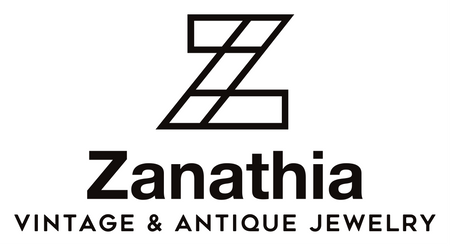
Turquoise jewelry courtesy of the Zanathia Jewelry Collection
Turquoise, a mineral created from copper and aluminum over 30 million years ago, is one of southwestern jewelry's most commonly used natural stones. It is believed that turquoise was first mined and used in North America around 200 B.C. In North America, turquoise can be found in historic active mines such as the Kingman Turquoise mine and the Morenci Turquoise mine in Arizona. Ancient tribes also mined their turquoise in the Cerrillos and Burro Mountains of New Mexico. Some ancient tribes that used turquoise were the Hohokam and Anasazi people. Archaeologists have discovered old turquoise beaded necklaces at these ancient mines, which indicate that turquoise was commonly used to make jewelry in the Southwest long ago. Although these ancient tribes likely called the mineral by another name, the word 'turquoise' is derived from the French word 'turquois,' which means Turkish. This is due to Europe being introduced to turquoise through Turkey, which was mined in Khorasan of Persia.
The Native American tribes in the Southwest region of North America developed and mastered the skill of cutting turquoise stone, inlay work, and bead making. Some Southwestern tribes related explicitly to specific designs are the Zuni, Santo Domingo, Navajo, Tewa, and Acoma. Historical southwestern turquoise jewelry designs include mosaic inlay, flower stamping, and turquoise heishi beading. By the mid-1800s, many native tribes in the Southwest region of North America, such as the Navajo, began to create turquoise jewelry with lapidary silversmith skills learned from the Spanish. They began stone cutting with silver and making jewelry for not just themselves but others as well. Southwestern turquoise jewelry became a highly sought-after collectible for tourists coming to the area for the Grand Canyon via the railroad system. During the historical 'Fred Harvey' Era, a genre of mass-produced, lightweight Native American jewelry for Anglo-tourists along the Santa Fe railroad lines. The Fred Harvey Company, created by entrepreneur Fred Harvey, established jewelry spots for tourists visiting the areas. The jewelry was made by specialized machinery and also by hand as well. Today, Fred Harvey-era jewelry is one of the most highly collected and sought-after Native American jewelry.

(Pictured Above is Atsidi Sani, credited for being the first known Navajo silversmith who taught his four sons the trade, and in return, they introduced many others)
Antique and vintage turquoise native to the Southwest region of North America come from various mines. Each mine is distinctively known for its specific turquoise aesthetic. Colorado turquoise mines include King Manassa, Cripple Creek, and Villa Grove. Arizona turquoise mines include the Kingman, Brisbee, Morenci, and the Sleeping Beauty turquoise mine located in the Global-Miami mining district. In Nevada, turquoise mines include the Number 8, Lone Mountain, and Lander Blue. In New Mexico, turquoise mines have the most significant known turquoise deposit in North America, the Cerrillos turquoise mine. Another New Mexico mine with a substantial amount of Turquoise is Pueblo Bonito in Chaco Canyon.

(Example of a variation of turquoise stones with natural matrix lines. Zanathia Jewelry Collection)
Antique and vintage southwestern turquoise jewelry includes various styles depending on the artist or tribe that created it. Highly collected southwestern turquoise jewelry consists of the Navajo squash blossom necklace, turquoise fetish necklaces with petit point and needlepoint designs from the Zuni, and the Santo Domingo turquoise heishi necklace. When collecting, It is essential to know and understand the difference between Native American-crafted turquoise jewelry and southwestern jewelry pieces that Native Americans may not have created. Native Americans make not every jewelry piece in the Southwest, but many talented artisans use the turquoise mined stones in these regions to develop beautiful turquoise jewelry. Therefore, it certainly helps to know the characteristics and types of Native American jewelry designs.
As an antique dealer and collector, if I'm aware that a turquoise jewelry piece is native to the Southwest region or created in a 'southwestern' style, but not necessarily an authentic tribal Native American piece, then I classify it as 'southwestern.' Therefore, tribal Native American jewelry and southwestern jewelry are not necessarily interchangeable.
Southwestern turquoise jewelry is a highly collected piece of history and is essential to preserve. In modern times, there is still an immense fascination and growing admiration for southwestern turquoise jewelry that I predict will not go away or fade anytime soon. The historical significance and importance of preserving southwestern jewelry have been emphasized. They are undoubtedly an exciting glimpse into the sentimental stories of the people who created these historical treasures.




